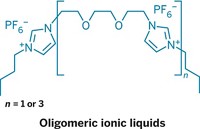Advertisement
Grab your lab coat. Let's get started
Welcome!
Welcome!
Create an account below to get 6 C&EN articles per month, receive newsletters and more - all free.
It seems this is your first time logging in online. Please enter the following information to continue.
As an ACS member you automatically get access to this site. All we need is few more details to create your reading experience.
Not you? Sign in with a different account.
Not you? Sign in with a different account.
ERROR 1
ERROR 1
ERROR 2
ERROR 2
ERROR 2
ERROR 2
ERROR 2
Password and Confirm password must match.
If you have an ACS member number, please enter it here so we can link this account to your membership. (optional)
ERROR 2
ACS values your privacy. By submitting your information, you are gaining access to C&EN and subscribing to our weekly newsletter. We use the information you provide to make your reading experience better, and we will never sell your data to third party members.
Materials
Turning Nanotubes Into Nanoribbons
Cutting carbon nanotubes lengthwise yields thin strips of graphene
by Mitch Jacoby
April 22, 2009

A chemical method can unzip multiwalled carbon nanotubes (MWNTs) along their lengths to produce ribbonlike strips of graphene, according to researchers in Mexico.
These graphene nanoribbons, which are elongated one-atom-thick strips of carbon, exhibit tantalizing mechanical and electronic properties. The materials are under study for applications ranging from hydrogen storage and battery electrodes to polymer nanocomposites and sensors.
Abraham G. Cano-Márquez, Fernando J. Rodríguez-Macías, and Yadira I. Vega-Cantú, all of the Institute for Scientific & Technological Research, in San Luis Potosi, and coworkers report that treating MWNTs with lithium and ammonia results in the insertion of ammonia-solvated lithium ions between the nanotubes' concentric graphene sheets. That step ruptures the multiwalled structures by prying apart the layers, which are further separated by way of hydrochloric acid and heat treatments (Nano Lett. 2009, 9, 1527).
Compared with other procedures for forming graphene nanoribbons, the new method, together with other recently reported nanotube "unzipping" methods (C&EN, April 20, page 7), offers a potentially simpler, less expensive, and more adaptable route to making large quantities of the material.




Join the conversation
Contact the reporter
Submit a Letter to the Editor for publication
Engage with us on Twitter